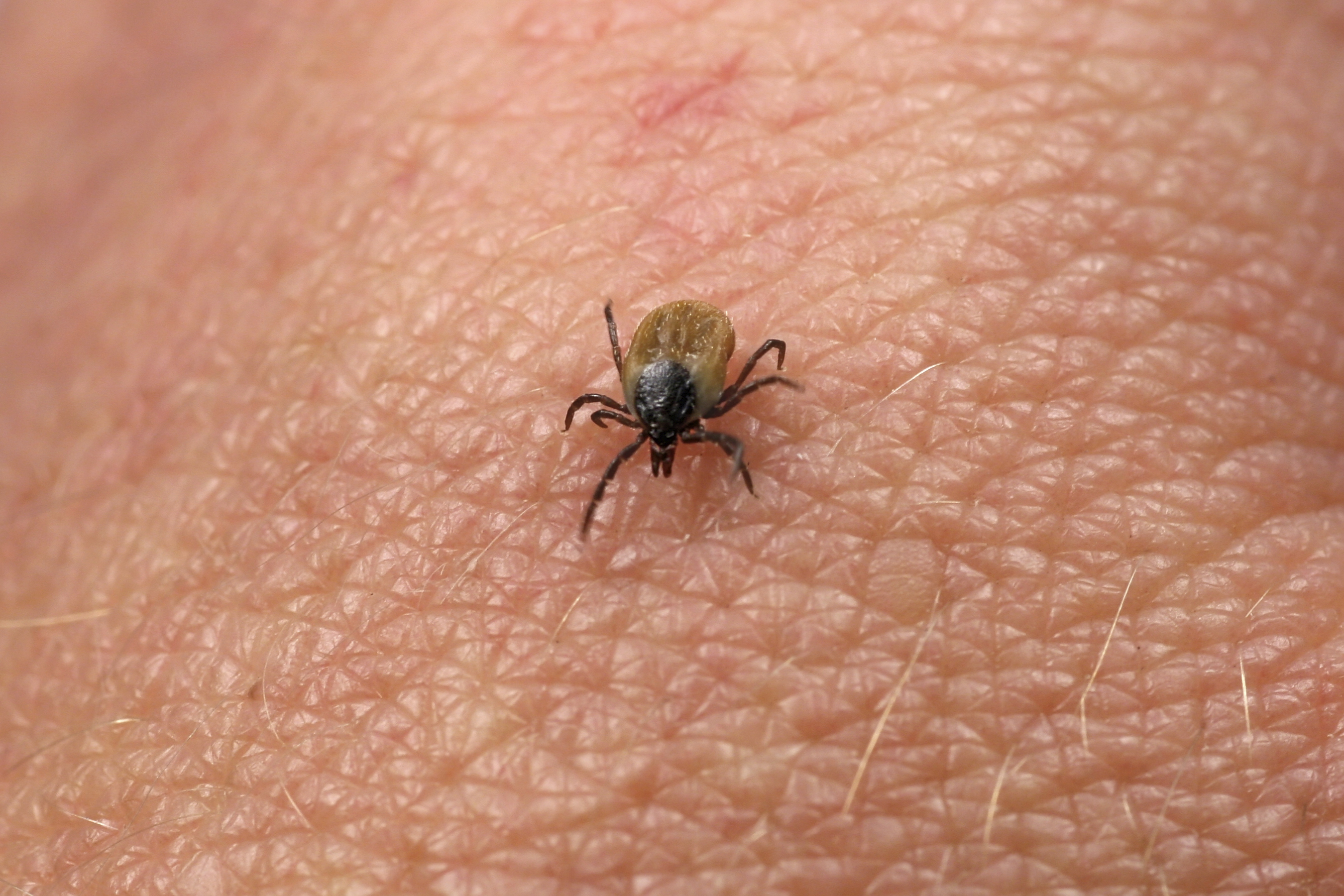As spring awakens here in UConn country, so do the ticks. UConn veterinarian, researcher, and tick-borne disease expert Dr. Sandra Bushmich recently answered questions about ticks and the diseases they carry in this area, especially some lesser known and emerging diseases.
Can you tell us about Borrelia miyamotoi, the ‘new’ tick-borne disease?
Borrelia miyamotoi is an emerging tick-borne disease which is caused by a different Borrelia than the one that causes Lyme disease. It was discovered more than 20 years ago in Japan and was originally thought not to cause disease. However a few years ago, a Russian physician found that it was indeed causing disease in some patients. The first diagnosed case was reported here in the U.S. in 2013. Some people become infected without showing symptoms at all, while others can have mild to severe symptoms. Some of the symptoms are different from those of Lyme disease. Borrelia miyamotoi infections usually have no rash, but the patient may have a fever, severe headache, arthralgia (achy joints), chills, fatigue, low blood platelets, and low white blood cell count. The symptoms are actually closer to those of anaplasmosis, another tick-borne disease.
What can you tell us about diagnosis?
Diagnosis of tick-borne diseases can be tricky. There are a lot of things that people think are Lyme disease that are not Lyme disease. There are also people who get tested for Lyme disease and actually do have Lyme disease, but the tests don’t detect the disease for a variety of reasons. A single tick can carry and transmit many different types of organisms and this can further complicate diagnosis, as each organism requires a different test to accurately diagnose the illnesses they cause. Fortunately, the treatment course for some of these diseases is similar, as is the case for both Lyme and Borrelia miyamotoi disease, where the same antibiotic will treat both. Unfortunately, this is not always the case; for example, Babesia microti infection requires a completely different drug treatment that is more similar to the treatment for malaria.
An interesting and important difference between Borrelia burgdorferi (Bb, the Lyme borrelia) and Borrelia miyamotoi is that the mother tick does not pass the Lyme borrelia to her eggs. When the ticks hatch, they become infected by ingesting the Lyme disease-causing organism in the course of their life cycle as they feed on a host carrying Bb. However, Borrelia miyamotoi is passed directly from the mother tick to her eggs. This is not good news, because Borrelia miyamotoi will be easier to perpetuate in the tick population. Data is suggestive that Borrelia miyamotoi is already here and has been here for some time but in small numbers. The numbers of positive samples are growing over time.
Why are ticks so bad here in Connecticut?
Ticks aren’t worse here than they are in surrounding states. But part of the reason they are bad is that Connecticut is a moist area, with the ocean being near, and we have so many trees. We are all essentially in the woods, which is another generally damp area. Ticks really need moisture for survival. Also, our deer population is out of control here, we have deer everywhere. Deer are an important host for the tick’s life cycle, and if you decrease the deer population you generally decrease the incidence of disease. With more suburban environments, deer population control by hunting becomes more difficult.
What are some other control measures?
Another control method is to treat your yard around areas that ticks like, namely perimeters near the woods or rock walls. Minimize tick populations by keeping your grass short, which is dehydrating to ticks. A selective application of permethrin is a good control. The April/May time frame is the best time to treat yards for ticks, and it will help control the tick population all year.
The best method is prevention – if you can prevent tick bites you can prevent the diseases! Wear long pants and socks. You can spray your boots with permethrin, but don’t apply it to the skin! Deet is a tick-repellent product that can be applied to skin if you are in a heavily infested area. You can buy special tick-repellent socks with tight weave, so ticks can’t bite through the fabric, and of course check yourself regularly for ticks, especially near the neck and head, which are their favorite areas to feed. Make it a nightly routine to do a tick check. With Lyme disease, the tick needs to feed for 24 to 48 hours to transmit the disease. With Borrelia miyamotoi, the organism is transmitted soon after feeding, therefore frequent tick checks and prompt removal are very important.
Also, don’t forget tick prevention for your pets. Check your pets and ensure they are treated with tick-preventative collars or monthly topical treatments for ticks. Not much is known about Borrelia miyamotoi infection in domestic animals.
With the carrier for Lyme disease being the deer tick, do we still need to worry if we find a dog tick on us?
In our area, there are not a lot of diseases transmitted by the dog tick. However, just slightly out of our area there are other diseases, such as Rocky Mountain spotted fever (a serious disease), that are transmitted by the dog tick. Still, people should know how to tell the difference between the deer tick and the dog tick, as this will help with diagnosis. The dog tick has white streaks near the head (an area called the scutum), whereas deer ticks are mainly brown. Look up by the head and don’t judge based only on size! The size of the tick changes as it feeds.
Due to the tricky nature of diagnosing tick-borne illness, a good strategy is to test the tick itself. UConn has a tick-testing service through the Connecticut Veterinary Medical Diagnostic Lab at the Storrs campus. They can identify the tick and test for a variety of tick-borne diseases common to this area, to help direct health care decisions.



